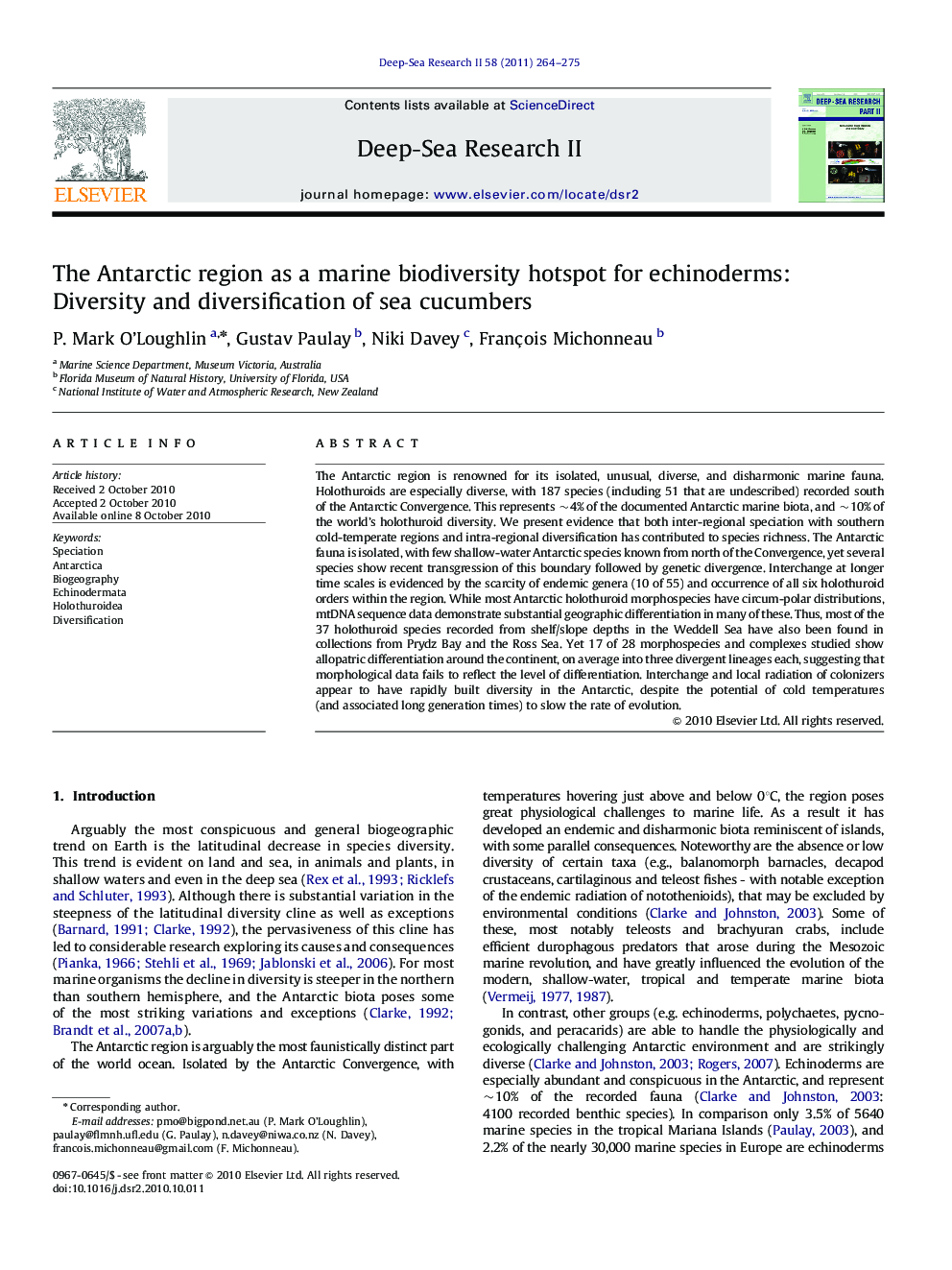| Article ID | Journal | Published Year | Pages | File Type |
|---|---|---|---|---|
| 4537276 | Deep Sea Research Part II: Topical Studies in Oceanography | 2011 | 12 Pages |
The Antarctic region is renowned for its isolated, unusual, diverse, and disharmonic marine fauna. Holothuroids are especially diverse, with 187 species (including 51 that are undescribed) recorded south of the Antarctic Convergence. This represents ∼4% of the documented Antarctic marine biota, and ∼10% of the world’s holothuroid diversity. We present evidence that both inter-regional speciation with southern cold-temperate regions and intra-regional diversification has contributed to species richness. The Antarctic fauna is isolated, with few shallow-water Antarctic species known from north of the Convergence, yet several species show recent transgression of this boundary followed by genetic divergence. Interchange at longer time scales is evidenced by the scarcity of endemic genera (10 of 55) and occurrence of all six holothuroid orders within the region. While most Antarctic holothuroid morphospecies have circum-polar distributions, mtDNA sequence data demonstrate substantial geographic differentiation in many of these. Thus, most of the 37 holothuroid species recorded from shelf/slope depths in the Weddell Sea have also been found in collections from Prydz Bay and the Ross Sea. Yet 17 of 28 morphospecies and complexes studied show allopatric differentiation around the continent, on average into three divergent lineages each, suggesting that morphological data fails to reflect the level of differentiation. Interchange and local radiation of colonizers appear to have rapidly built diversity in the Antarctic, despite the potential of cold temperatures (and associated long generation times) to slow the rate of evolution.
